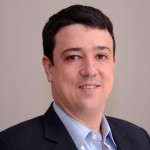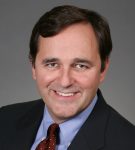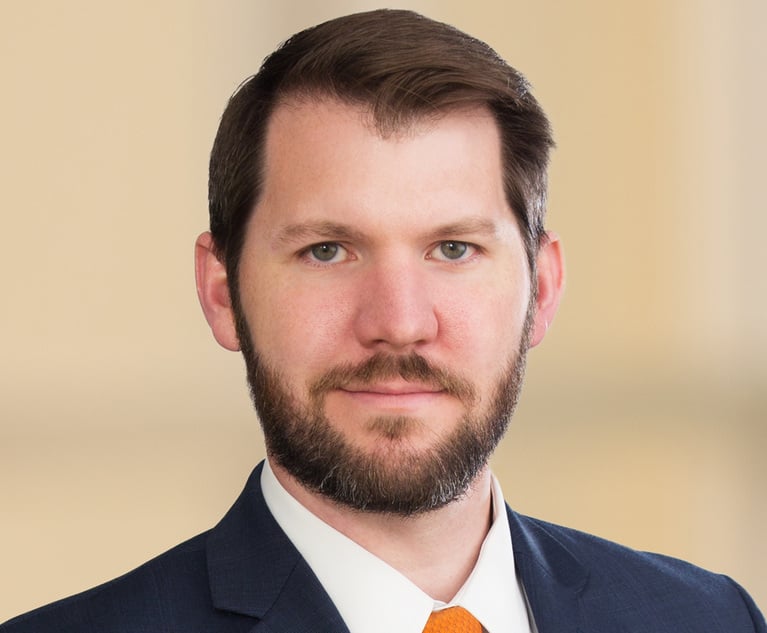Part II: How the US elite became so much more profitable than their UK counterparts
The second in a three-part series looking at competition between elite US and UK firms. Part II examines how the performance gap between the US and UK elite originated.
August 07, 2017 at 03:25 PM
8 minute read
 Editor's Note: this is the second in a three-part series looking at competition between elite US and UK firms. Part I presented that evidence that the US elite has vanquished their UK counterparts; Part III draws out the lessons for firms of all types.
Editor's Note: this is the second in a three-part series looking at competition between elite US and UK firms. Part I presented that evidence that the US elite has vanquished their UK counterparts; Part III draws out the lessons for firms of all types.
The US elite are significantly more profitable, on an equilibrium-exchange-rate basis, than are their UK counterparts, (as described in Part 1 of this series). The geographic origins of firms, and its consequences for how firms grew, probably played an important role in establishing this profitability gap. Whatever the reason, the US elite have consolidated their lead through the great recession: they widened the profitability gap, demonstrated greater organizational vitality, and established an 'increasing returns' dynamic that looks set to lock-in their advantage.
The accident of geography
In Part I, we saw that, with the exception of Slaughter and May, the low profitability end of the US elite is operating at profit per equity partner (PPP) levels of 30 to 60 percent above their UK counterparts. How can there be such a divergence in PPP when both sets of firms have great lawyers doing highly-sophisticated bespoke work on critical matters for clients who value high-quality lawyering?
A major part of the explanation may simply be geography. Different geographic markets have different inherent profitability: while the US and UK are high profit, much of the rest of the developed world (e.g. western Europe, developed Asia, the middle east, and Australia) operates at a notch down in profitability, and the emerging markets (e.g. Africa, China, CIS, Latin America) operate at yet a further notch down. The US and UK elite firms have very different footprints across geographic markets categorized as high, medium, and low profitability in this way, see Figure 1.

Could the UK elite's greater exposure to medium and low profit markets explain their lower average profitably? Yes. If you estimate that the profitability of medium and low profit markets is 75% and 20%, respectively, of that of the high profit markets then, for the typical UK and US mixes of partners by market type as shown in Figure 2, the geographic mix difference would explain a 30 percent difference in PPP.

Has the US profitability advantage come about through firm leaders on this side of the Atlantic deliberately eschewing growth in lower profit markets? We doubt it. We suspect the difference in market footprints, and its profitability consequence, is more due to “maps” than “chaps”—that is, more due to geographic happenstance than to leadership acumen.
For a US firm, sitting in an economy that is over 6.5 times the size of that of the UK, much of the impetus for growth can be satisfied within the domestic market. As the segment of the US market in which these elite firms play is largely homogeneous nationally, growth comes without a major profitability sacrifice. In contrast, the UK firms' natural avenues for growth—continental Europe, Hong Kong, Australia—all entail a step down in profitability.
Geographic growth has some underappreciated dynamics. One is that once a foothold is established in a market, the number of partners in the market tends to grow at a faster rate than does that of the firm as a whole. As an example, the table in Figure 3 compares the mix of new partners (promotions and laterals) across markets of different profitability with the mix of incumbent partners for two example firms—Allen & Overy and Kirkland & Ellis. The data show that a greater portion of new partners are concentrated more in lower-profit markets than are incumbent partners. For example, in the case of Allen & Overy, 20 percent of new partners in 2015-2016 were in lower profit markets, compared to only 9 percent of incumbent partners.

Growing disproportionately in lower profit markets reduces average profitability. This is rarely a firm's intent. More typical is an aspiration to be the minimum size needed to serve the firm's most important clients in the local market. But mission creep often ensues. The entrepreneurial type of partner who founds an office in a new geography will instinctively and energetically look to grow. Growth won't always be in practices, or with clients, that are central to the firm's strategy. Yet, to firm leadership, sanctioning the hiring of each marginal lawyer seems like a small price to pay to keep the entrepreneurial founders engaged and motivated. Before long, however, the firm's low-profit market presence is larger and less aligned with the firm's global strategy than was intended.
Dispersion of partners across markets of different intrinsic profitability is not inherently a problem. It only becomes one if a firm's compensation system doesn't reflect the difference in the economics of partners' practices across different geographic markets. If the compensation system is biased to global averages, as tends to be the case at most firms and perhaps particularly for those with lockstep-type systems, the compensation of partners in lower-profit markets drifts up while that of partners in higher-profit markets drifts down. This leads partners in higher-profit markets to become undercompensated relative to the economic value of their practices. The higher is the percent of a firm's partners in lower profit markets, the more pronounced is the under-compensation of partners in high profit markets. And, of course, the more pronounced the under-compensation, the more headroom for rival firms to lure away highly commercially successful partners with compensation packages more aligned with the economics of their practices.
Post-recession momentum
The US firms' profitability advantage is not a momentary event. Rather it has been growing for some time and, indeed, has widened dramatically over the course of the great recession. While the onset of the global financial crisis saw an average PPP decline of about 15 percent on both sides of the Atlantic, performance through the recession varied markedly, see Figure 4. Today, almost a decade later, the elite UK firms have yet to regain their pre-recession profitability levels; in contrast, the US elite regained their prior peak in just three years and are now enjoying profitability some 20+ percent above that level, (each on an inflation-adjusted local currency basis).

This marked difference in momentum is not just in profitability, which could be artificially boosted by, for example, constraining the growth of equity partners. Indeed, as Figure 5 shows, firms on both sides of the Atlantic increased their number of equity partners through the recession, with the US firms doing so slightly more than their UK brethren. However, the trajectories of the number of lawyers are quite distinct: the US firms have grown strongly while the UK firms have contracted slightly. Thus, the US elite exhibit not just greater profitability momentum than their UK counterparts; they also display broader growth and institutional vitality.

The US elite look set to lock in their advantage thanks to the phenomenon of 'increasing returns'. While much of conventional economics is premised on the notion of diminishing marginal returns, that is the tendency for companies that get ahead of their rivals to be slowed in their progress by running out of, say, the best land to farm or people to hire, such is not the case for law firms. Rather, they are governed by the phenomenon of increasing returns, that is the tendency for firms who are ahead to get further ahead as virtuous loops are established between attractive clients, great lawyers, and strong profits. We see this 'increasing returns' phenomenon among elite global firms (Figure 6): the firms with stronger PPP have exhibited higher growth in PPP than have their lower PPP brethren. The implication is that, absent a tectonic market change, the UK elite will not close the gap with their US counterparts.

* * * *
Part III of this three-part series looks at the lessons firms of all types can learn from this story.
 Nicholas Bruch is a Senior Analyst at ALM Legal Intelligence. His experience includes advising law firms and law departments in developing and developed markets on issues related to strategy, business development, market intelligence, and operations. He can be reached by Email, Twitter, or LinkedIn.
Nicholas Bruch is a Senior Analyst at ALM Legal Intelligence. His experience includes advising law firms and law departments in developing and developed markets on issues related to strategy, business development, market intelligence, and operations. He can be reached by Email, Twitter, or LinkedIn.
 Hugh A. Simons is an ALM Intelligence Fellow. He is a former senior partner and executive committee member at The Boston Consulting Group and the former chief operating officer at Ropes & Gray. He is currently conducting research for a book on the fundamentals of elite law firm strategy.He can be reached by Email
Hugh A. Simons is an ALM Intelligence Fellow. He is a former senior partner and executive committee member at The Boston Consulting Group and the former chief operating officer at Ropes & Gray. He is currently conducting research for a book on the fundamentals of elite law firm strategy.He can be reached by Email
![]()
This content has been archived. It is available through our partners, LexisNexis® and Bloomberg Law.
To view this content, please continue to their sites.
Not a Lexis Subscriber?
Subscribe Now
Not a Bloomberg Law Subscriber?
Subscribe Now
NOT FOR REPRINT
© 2025 ALM Global, LLC, All Rights Reserved. Request academic re-use from www.copyright.com. All other uses, submit a request to [email protected]. For more information visit Asset & Logo Licensing.
You Might Like
View All
How I Made Office Managing Partner: 'Don’t Be an Opportunity Killer,' Says Thomas Haskins of Barnes & Thornburg


White & Case Crosses $4M in PEP, $3B in Revenue in 'Breakthrough Year'
6 minute read
From Laggards to Tech Founders: Law Firm Innovation Is Flourishing
Trending Stories
Who Got The Work
J. Brugh Lower of Gibbons has entered an appearance for industrial equipment supplier Devco Corporation in a pending trademark infringement lawsuit. The suit, accusing the defendant of selling knock-off Graco products, was filed Dec. 18 in New Jersey District Court by Rivkin Radler on behalf of Graco Inc. and Graco Minnesota. The case, assigned to U.S. District Judge Zahid N. Quraishi, is 3:24-cv-11294, Graco Inc. et al v. Devco Corporation.
Who Got The Work
Rebecca Maller-Stein and Kent A. Yalowitz of Arnold & Porter Kaye Scholer have entered their appearances for Hanaco Venture Capital and its executives, Lior Prosor and David Frankel, in a pending securities lawsuit. The action, filed on Dec. 24 in New York Southern District Court by Zell, Aron & Co. on behalf of Goldeneye Advisors, accuses the defendants of negligently and fraudulently managing the plaintiff's $1 million investment. The case, assigned to U.S. District Judge Vernon S. Broderick, is 1:24-cv-09918, Goldeneye Advisors, LLC v. Hanaco Venture Capital, Ltd. et al.
Who Got The Work
Attorneys from A&O Shearman has stepped in as defense counsel for Toronto-Dominion Bank and other defendants in a pending securities class action. The suit, filed Dec. 11 in New York Southern District Court by Bleichmar Fonti & Auld, accuses the defendants of concealing the bank's 'pervasive' deficiencies in regards to its compliance with the Bank Secrecy Act and the quality of its anti-money laundering controls. The case, assigned to U.S. District Judge Arun Subramanian, is 1:24-cv-09445, Gonzalez v. The Toronto-Dominion Bank et al.
Who Got The Work
Crown Castle International, a Pennsylvania company providing shared communications infrastructure, has turned to Luke D. Wolf of Gordon Rees Scully Mansukhani to fend off a pending breach-of-contract lawsuit. The court action, filed Nov. 25 in Michigan Eastern District Court by Hooper Hathaway PC on behalf of The Town Residences LLC, accuses Crown Castle of failing to transfer approximately $30,000 in utility payments from T-Mobile in breach of a roof-top lease and assignment agreement. The case, assigned to U.S. District Judge Susan K. Declercq, is 2:24-cv-13131, The Town Residences LLC v. T-Mobile US, Inc. et al.
Who Got The Work
Wilfred P. Coronato and Daniel M. Schwartz of McCarter & English have stepped in as defense counsel to Electrolux Home Products Inc. in a pending product liability lawsuit. The court action, filed Nov. 26 in New York Eastern District Court by Poulos Lopiccolo PC and Nagel Rice LLP on behalf of David Stern, alleges that the defendant's refrigerators’ drawers and shelving repeatedly break and fall apart within months after purchase. The case, assigned to U.S. District Judge Joan M. Azrack, is 2:24-cv-08204, Stern v. Electrolux Home Products, Inc.
Featured Firms
Law Offices of Gary Martin Hays & Associates, P.C.
(470) 294-1674
Law Offices of Mark E. Salomone
(857) 444-6468
Smith & Hassler
(713) 739-1250








